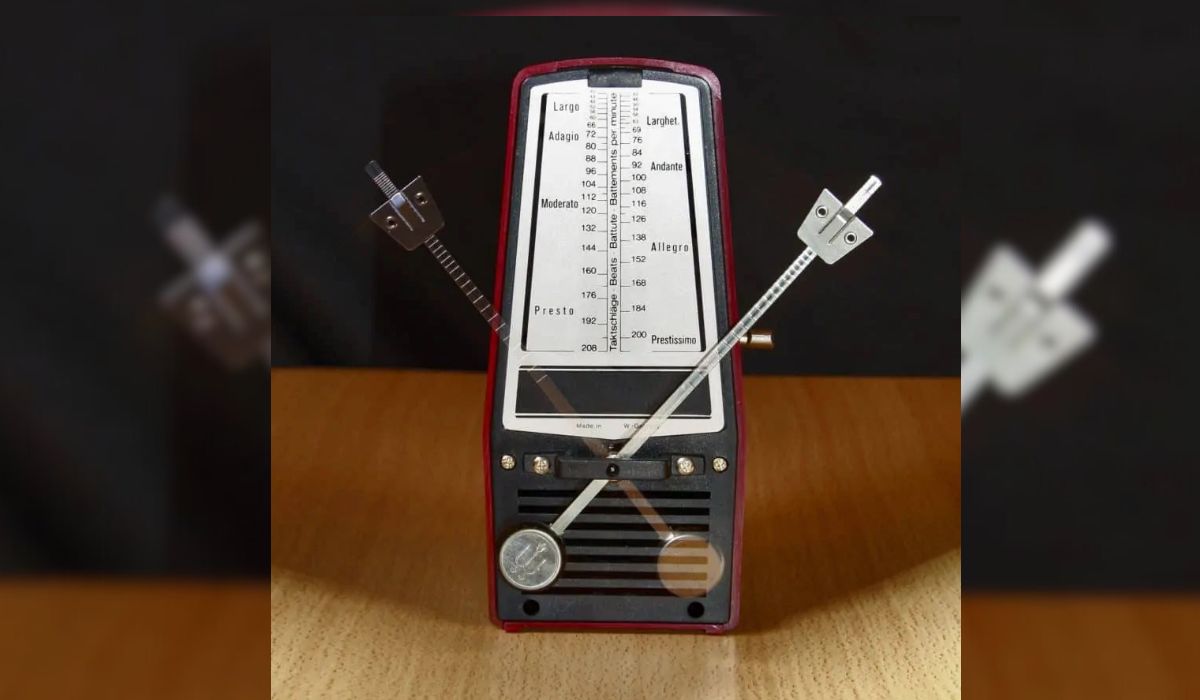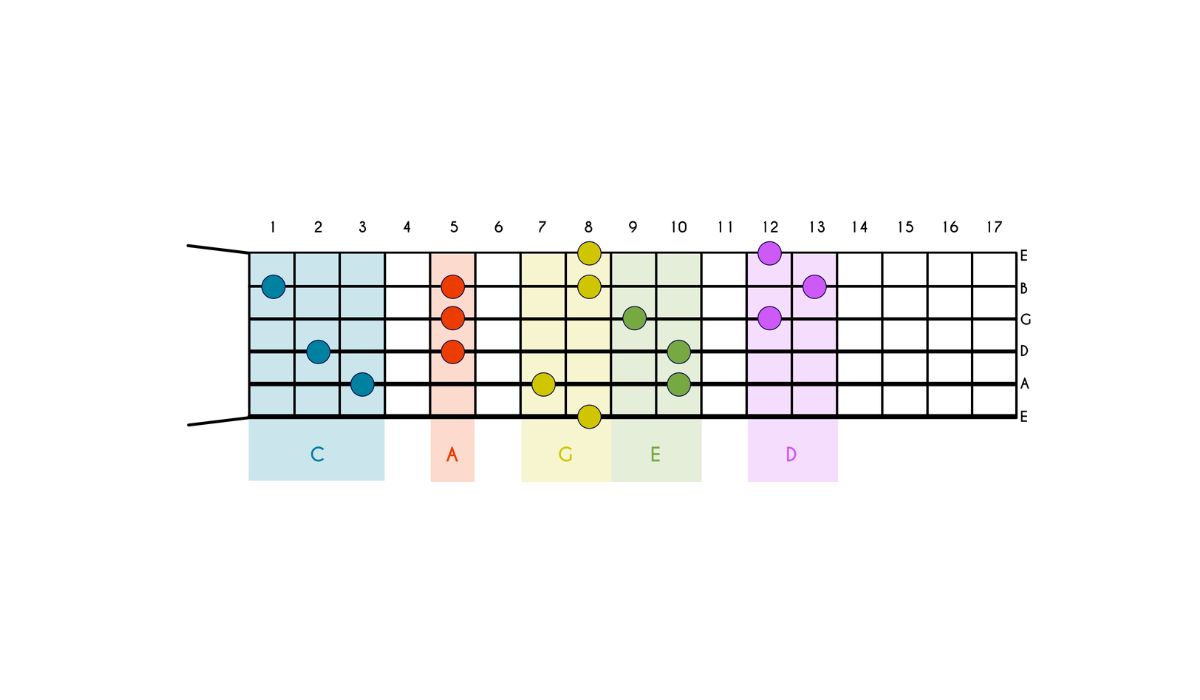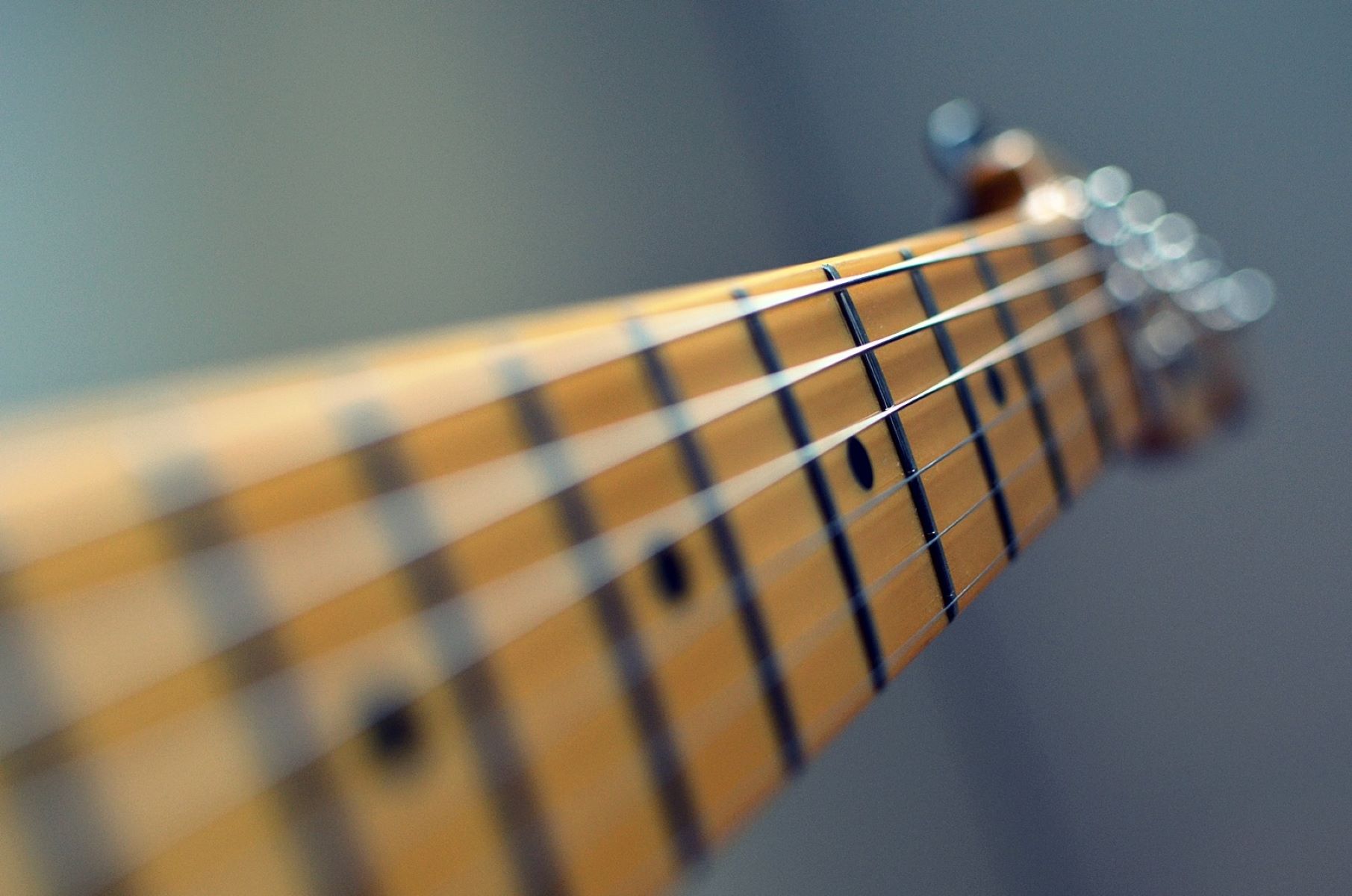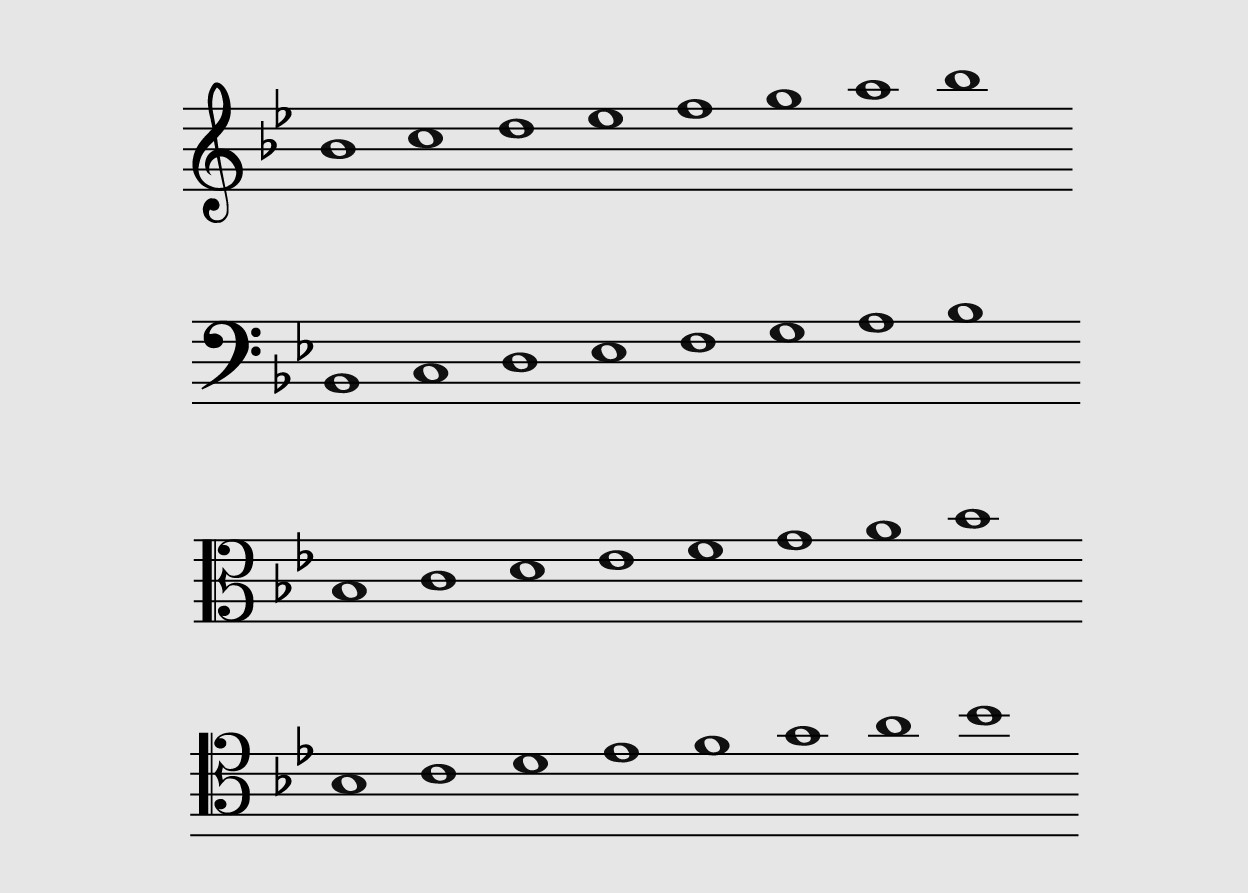Home>Production & Technology>Metronome>How To Play A Scale With A Metronome


Metronome
How To Play A Scale With A Metronome
Modified: January 22, 2024
Learn how to play a scale with a metronome for perfect timing and precision. Enhance your musical skills with the help of a metronome.
(Many of the links in this article redirect to a specific reviewed product. Your purchase of these products through affiliate links helps to generate commission for AudioLover.com, at no extra cost. Learn more)
Table of Contents
Introduction
Playing a scale with a metronome is an essential exercise for any musician looking to improve their timing, accuracy, and overall technique. A metronome is a device that produces a steady beat, helping musicians stay in time and develop a consistent sense of rhythm. Whether you’re a beginner or an experienced player, incorporating a metronome into your practice routine can greatly enhance your playing skills.
Not only does playing with a metronome improve your timing and precision, but it also trains your ears to listen closely to the beat and stay in sync with it. This is especially important when playing in an ensemble or jamming with other musicians, as it helps you maintain a solid foundation and play in perfect harmony with the rest of the group.
In this article, we will delve into the process of playing a scale with a metronome, step by step. We will cover everything from choosing the right metronome to adding variations and increasing the speed of the scale. So grab your instrument, find a quiet space, and let’s get started!
Choosing the right metronome
When it comes to choosing a metronome, there are several factors to consider. The first decision you’ll need to make is whether you want a physical metronome or a digital metronome app. Physical metronomes are classic devices that produce an audible click, while digital metronome apps are convenient and offer additional features like customizable rhythms and tempos.
If you prefer a physical metronome, you’ll find a variety of options available, ranging from mechanical metronomes with swinging pendulums to electronic metronomes with LCD screens. Consider factors such as the sound quality, durability, and ease of use when selecting a physical metronome.
On the other hand, digital metronome apps are widely available and can be easily downloaded on your smartphone or tablet. Look for apps that offer a user-friendly interface, adjustable tempos, and the ability to save and organize your practice routines. Some apps even provide visual cues, such as flashing lights or bouncing balls, to help you follow the beat.
In addition to the type of metronome, you’ll also need to consider the tempo range. Make sure the metronome you choose can accommodate the tempo you’ll be practicing at, whether it’s slow and steady or fast and challenging. Some metronomes also offer the option to set subdivisions, allowing you to practice more complex rhythms.
Lastly, think about the portability and convenience of the metronome. If you’re frequently on the go, a compact metronome or a metronome app on your mobile device would be ideal. However, if you primarily practice at home or in a dedicated studio, you might prefer a larger metronome with additional features.
Ultimately, the right metronome for you will depend on your personal preferences and practice needs. Take the time to research and try out different options to find the metronome that suits you best. With the right metronome at your side, you’ll be ready to embark on a journey of rhythm and precision in your scale playing.
Setting up the metronome
Once you have chosen the perfect metronome for your practice sessions, it’s time to set it up correctly. Properly setting up the metronome will ensure that you get the most out of your scale practice and develop a solid sense of timing.
The first step is to place the metronome within your line of sight and within comfortable reach. This allows you to easily see and adjust the settings without interrupting your playing. Whether you’re using a physical metronome or a digital app, make sure it is positioned where you can clearly see the display and controls.
Next, it’s important to set the tempo to an appropriate speed. If you’re just starting out, begin with a slow tempo that you can comfortably play without sacrificing accuracy. As you become more comfortable, gradually increase the tempo to challenge yourself and improve your speed.
Many metronomes allow you to set the beats per minute (BPM) by using a dial, buttons, or a touchscreen interface. Take your time to choose the right tempo for your scale practice, keeping in mind that slower tempos are beneficial for mastering technique and coordination, while faster tempos help build speed and agility.
In addition to the tempo, you might also have the option to set subdivisions. Subdivisions divide each beat into smaller rhythmic values, such as quarter notes, eighth notes, or sixteenth notes. This feature is especially helpful when practicing complex rhythms or syncopated patterns within the scale.
Once you have set the tempo and subdivisions, it’s time to familiarize yourself with the metronome’s sound. Listen to the click or beep that it produces and try to internalize the beat. Pay attention to the volume and tone of the metronome, ensuring that it is not too distracting or overpowering.
Lastly, consider incorporating a visual cue if your metronome offers that option. Visual cues can be helpful for those who prefer a visual reference rather than relying solely on auditory cues. These cues can be in the form of a flashing light or a bouncing ball, synchronized with the beat of the metronome.
Remember, the goal is to integrate the metronome seamlessly into your practice routine. Experiment with different settings and find what works best for you. With the metronome properly set up, you’ll be ready to tackle your scale practice with precision and improve your timing skills.
Understanding the scale
Before diving into playing a scale with a metronome, it’s essential to have a clear understanding of what a scale is. A scale is a sequence of musical notes arranged in ascending or descending order, usually spanning an octave. Scales are the building blocks of melodies and harmonies in music.
There are various types of scales, including major scales, minor scales, pentatonic scales, and chromatic scales, among others. For the purpose of this article, let’s focus on the major scale, which is one of the most commonly used scales in music.
A major scale consists of seven different notes, with a specific pattern of whole steps (W) and half steps (H) between them. The pattern for a major scale is as follows: W-W-H-W-W-W-H. For example, in the key of C major, the notes would be C-D-E-F-G-A-B-C.
Understanding the structure and pattern of a scale is crucial for playing it accurately with a metronome. It helps you anticipate the next note and maintain a consistent rhythm throughout the scale. Take some time to familiarize yourself with the major scale pattern in different keys so that you can apply it during your practice sessions.
Additionally, it’s helpful to know the fingerings for the scale on your instrument. Different instruments have unique fingerings for playing scales, so consult resources specific to your instrument to ensure you’re using the correct fingerings. Practicing scales with the correct fingerings enhances muscle memory and fluidity in your playing.
Now that you have a solid understanding of scales and their structure, you’re ready to apply this knowledge while playing with a metronome. The metronome will serve as your guide, keeping you in time and helping you refine your technique and timing as you navigate the scale.
Remember, consistency is key when playing a scale with a metronome. Focus on playing each note evenly and precisely, paying attention to the timing and rhythm while maintaining a smooth flow. With practice, you’ll be able to play scales effortlessly and with impeccable timing, thanks to the guidance of the metronome.
Starting slow and increasing speed
When playing a scale with a metronome, it’s important to start at a slow tempo and gradually increase the speed as you become more comfortable and confident. This incremental approach allows you to focus on accuracy and develop good technique before tackling faster tempos.
Begin by setting the metronome to a tempo that feels comfortable and manageable for you. It’s better to start slower and gradually build up speed than to rush and sacrifice accuracy. This slow tempo allows you to pay attention to each note, ensuring that you’re hitting the right pitch and maintaining consistent timing.
As you practice the scale at a slower tempo, keep your focus on maintaining an even rhythm throughout. Pay attention to how each note aligns with the metronome beat and strive to be precise in your timing. This deliberate and attentive practice will lay a solid foundation for a steady and controlled performance.
Once you feel confident and consistent at the slower tempo, it’s time to challenge yourself by gradually increasing the metronome speed. Start by bumping up the tempo by a few beats per minute (BPM) and play the scale again. Focus on staying relaxed and maintaining the same level of accuracy and control as you did at the slower tempo.
Keep repeating this process, gradually increasing the tempo in small increments each time. This allows your muscle memory to adapt and your playing to become more comfortable and fluid at higher speeds. Push yourself to the edge of your comfort zone, but always prioritize accuracy and control over speed.
It’s important to note that mastering a scale at a slow tempo does not automatically guarantee success at faster speeds. By gradually increasing the tempo, you’re training your fingers, ears, and mind to work together in harmony, ensuring that you can execute the scale accurately and confidently, even at challenging tempos.
Remember, patience and consistency are key when practicing with a metronome. Don’t get discouraged if progress seems slow at times. With regular practice and a methodical approach, you’ll gradually build the speed and fluidity required to play a scale effortlessly and in perfect sync with the metronome.
By starting slow and gradually increasing the speed, you’ll develop a solid foundation in timing and technique, enabling you to tackle more complex musical pieces with confidence and precision.
Focusing on accuracy and timing
When practicing a scale with a metronome, it’s crucial to prioritize accuracy and timing. These two elements go hand in hand and are essential for developing a strong sense of rhythm and precision in your playing.
Accuracy refers to playing each note in the scale with precision and clarity. It means hitting the correct pitch, using the proper fingering, and maintaining a consistent tone and technique throughout the scale. Take your time to ensure that each note is played with intention and attention to detail.
One way to enhance accuracy is to practice the scale slowly, paying close attention to each note’s placement within the metronome’s beat. Focus on the synchronization between your playing and the metronome, making sure each note aligns perfectly with the click or beep. The metronome acts as a guide and helps you stay on track, ensuring that you’re not rushing or lagging behind the beat.
In addition to accuracy, timing is equally important. Timing refers to the ability to play in rhythm and maintain a steady tempo throughout the scale. It’s about understanding the subdivision of the beat and internalizing the pulse of the metronome.
To improve your timing, actively listen to the metronome’s click or beep. Focus on internalizing the rhythm and feeling the pulse within your body. As you play the scale, be mindful of the space between the notes, making sure each note is held for its intended duration. This attention to timing helps develop a consistent and solid rhythm in your playing.
Another helpful exercise for improving accuracy and timing is to practice playing the scale in different note durations. Start by playing the scale in quarter notes, then switch to eighth notes, and finally, challenge yourself by playing in sixteenth notes. This variation not only helps you reinforce the scale’s pattern but also enhances your rhythmic precision.
As you focus on accuracy and timing, don’t forget to listen critically to your playing. Pay attention to any notes that may sound rushed or uneven. Take note of any areas that require extra practice and make adjustments as needed. A well-trained ear is crucial for accurately assessing your performance and identifying areas for improvement.
Remember that both accuracy and timing are skills that can be developed and refined over time with consistent practice. By incorporating a metronome into your routine and dedicating focused practice sessions to these aspects, you’re setting yourself up for a marked improvement in your playing ability.
So, keep practicing with precision, stay in sync with the metronome, and soon enough, accuracy and timing will become second nature, paving the way for musical greatness.
Practicing with different rhythms
While playing a scale with a metronome, it’s beneficial to incorporate different rhythms into your practice routine. Practicing with various rhythms not only adds excitement and creativity to your playing but also helps improve your overall sense of timing and adaptability.
One way to introduce different rhythms is by using different subdivisions of the beat. For example, instead of playing the scale in straight eighth notes, try playing it with a swing feel, emphasizing the first note of each pair. This adds a syncopated and groovy feel to the scale, enhancing your rhythmic awareness and adding a dynamic element to your playing.
You can also experiment with playing the scale in triplets. This involves dividing each beat into three equal parts instead of two. Playing the scale in triplets adds a sense of complexity and helps develop your ability to subdivide the beat accurately. Start by practicing at a slower tempo, gradually increasing the speed as you become more comfortable.
Another way to practice with different rhythms is by incorporating syncopation. Syncopation involves accenting off-beat notes or adding unexpected rests within the scale. This challenges your sense of timing and helps you develop a strong internal pulse as you navigate the syncopated patterns. Experiment with different syncopated variations to add a lively and dynamic element to your scale playing.
In addition to varying the subdivisions and adding syncopation, you can also experiment with different articulations and dynamics within the scale. Play certain notes staccato while holding others legato. Explore different dynamics, starting softly and gradually increasing the volume as you ascend the scale, and then tapering off as you descend. This adds depth and expression to your playing and enhances your control over the scale.
When practicing with different rhythms, it’s important to start at a slower tempo to ensure accuracy and gradually increase the speed as you become comfortable. Breaking down the rhythms into smaller sections and isolating specific patterns can also help you focus on mastering each one before combining them into a full-scale exercise.
As with any practice, remember to listen critically to your playing and make adjustments as needed. Pay attention to how each rhythm affects the overall flow and timing of the scale. Use the metronome as a constant reference point to stay in sync and maintain a steady tempo throughout the various rhythm exercises.
Practicing with different rhythms not only makes your scale playing more interesting and engaging, but it also develops your sense of musicality and versatility. By incorporating various rhythmic patterns into your practice routine, you’re expanding your repertoire and building the foundation for more expressive and captivating musical performances.
Adding variations to the scale
To keep your scale practice engaging and challenging, it’s important to add variations to the basic scale pattern. By incorporating different musical elements and techniques, you can expand your playing skills and develop a greater sense of creativity and versatility.
One way to add variation to the scale is by introducing different melodic patterns. Instead of simply ascending and descending the scale in a linear fashion, experiment with playing the scale in broken patterns, such as playing the notes in a sequence of thirds or fourths. This adds a sense of musicality and complexity to your scale practice, as it requires you to think and navigate the scale differently.
You can also experiment with playing the scale in different octaves. Instead of confining yourself to one position, try playing the scale in different octaves up and down the neck of your instrument. This not only adds a visual and technical challenge but also allows you to explore the different tonal qualities and possibilities of the scale on your instrument.
Furthermore, you can incorporate techniques such as slides, bends, vibrato, and hammer-ons/pull-offs into your scale practice. These techniques not only add variation but also enhance your expressiveness and control over the instrument. Experiment with incorporating these techniques on different notes within the scale, exploring their sound and impact on the overall musicality.
Another variation you can add to your scale practice is to change the rhythm or tempo. Play the scale with a swung feel, emphasizing the first note of each pair, or try playing it with a syncopated rhythm. You can also experiment with playing the scale at different tempos, starting slow and gradually increasing the speed as you progress. These variations help you develop a deeper sense of rhythm and improve your adaptability in different musical contexts.
Additionally, consider incorporating different musical styles into your scale practice. For example, if you primarily play rock music, try playing the scale with a bluesy or jazzy feel, experimenting with slides, bends, and expressive phrasing. If you’re more inclined towards classical music, focus on playing the scale with a precise and controlled technique. Embracing different styles not only adds variation to your practice but also expands your musical vocabulary.
Remember, the goal is to push yourself beyond the basic scale pattern and explore the possibilities within the scale. Be creative, playful, and open to new ideas. Embrace the variations as opportunities to develop your musicality and expressiveness.
As always, utilize the metronome as a tool to keep yourself in time and maintain a steady rhythm while incorporating these variations. The metronome will help you stay disciplined and ensure that you’re maintaining accuracy and control throughout the scale.
By adding variations to your scale practice, you’re taking your playing to the next level. You’re not only mastering the basic scale pattern but also developing your individual style and becoming a more versatile and well-rounded musician.
Conclusion
Playing a scale with a metronome is a valuable exercise for musicians of all skill levels. It helps improve timing, accuracy, rhythm, and overall technique. By incorporating a metronome into your practice routine, you’re setting yourself up for growth and progress in your musical journey.
When choosing a metronome, consider factors such as the type of metronome (physical or digital), tempo range, and portability. Find a metronome that suits your needs and preferences, allowing you to practice with ease and efficiency.
Properly setting up the metronome is essential for effective practice sessions. Place it within your line of sight, set the tempo to an appropriate speed, and familiarize yourself with the sound and visual cues it provides. This ensures that you can play in time and benefit from the guidance the metronome provides.
Understanding the scale structure and fingerings on your instrument is crucial for playing with accuracy. Familiarize yourself with the major scale pattern and practice it in different keys to develop proficiency and fluidity.
Start your scale practice slowly and gradually increase the speed, focusing on accuracy and consistency. Patience and persistence are key as you train your muscles and ears to adapt to faster tempos.
Give attention to accuracy and timing, focusing on playing each note precisely and maintaining a steady rhythm. Practice with different rhythms, subdivisions, and articulations to enhance your sense of timing and expand your musicality.
Adding variations to the scale, such as melodic patterns, octave changes, and different techniques, adds excitement and challenges your playing. Explore different musical styles and experiment with rhythm and tempo changes to further enhance your skills and creativity.
In conclusion, incorporating a metronome into your scale practice is a valuable tool for musicians seeking to improve their timing, accuracy, and overall technique. By starting slow, focusing on accuracy, and gradually increasing the speed, you’ll develop a solid sense of rhythm and precision. Through practicing with different rhythms, adding variations to the scale, and exploring different musical styles, your playing will become more expressive, versatile, and engaging.
So, embrace the metronome as your musical partner and embark on a journey of growth, musicality, and mastery as you play your scales with precision and confidence.











